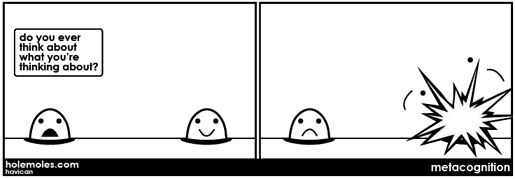Bloom’s Revised Taxonomy has already been considered as the “most popular cognitive approach to Serious Game evaluation” [1]. Bloom’s original taxonomy [2] stems from the field of education and consisted of categories for Knowledge, Comprehension, Application, Analysis, Synthesis, and Evaluation. Bloom’s original taxonomy was a popular tool for objectives-based evaluation as it allowed for a high level of detail when stating learning objectives [3].
However, the original taxonomy was criticized resulting in various revisions by different authors. See de Kock, Sleegers, and Voeten for a classification of learning environments, containing reviews of the revisions [4]. The revision of Anderson et al. [5] as well as Pintrich [6] improves the original taxonomy by including the category of metacognition. They also distinguish between two dimensions: a Knowledge dimension and a Cognitive Process dimension.

We feel the inclusion of the metacognition knowledge level reflects the ongoing insight in the field of psychotherapy where Cognitive Behavioural Therapy (CBT) is currently advancing into its “third wave.” The first wave of CBT started in the 1950s and applied classical conditioning and operant learning. The second wave applied information processing and brought CBT to its current worldwide status. Now, a third wave of psychotherapies is developing “a heterogeneous group of treatments, including acceptance and commitment treatment, behavioural activation, cognitive behavioural analysis system of psychotherapy, dialectical behavioural therapy, metacognitive therapy, mindfulness-based cognitive therapy and schema therapy” [7]. These three waves in CBT can be seen to move up along both dimensions of our taxonomy. Different therapy forms in CBT’s third wave are aimed at the metacognitive level and include all the cognitive processing steps up to and including Creation as part of their treatment.
By applying Bloom’s Revised Taxonomy to analyze the content of psychotherapeutic games, we are approaching these games as educational content. We see all therapeutic interaction as part of a learning process; often knowledge is to be acquired, emotions are revised, and behaviour is changed during psychotherapy.
This is an excerpt of the paper I co-authored Using the Revised Bloom Taxonomy to Analyze Psychotherapeutic Games
REFERENCES
1A. De Gloria, F. Bellotti, and R. Berta, “Serious Games for education and training,” International Journal of Serious Games, vol. 1, no. 1, 2014.View at: Google Scholar
2. B. S. Bloom, M. D. Engelhart, E. J. Furst et al., Taxonomy of educational objectives: Handbook I: Cognitive domain, vol. 56(19), 1956.
3. J. Marzano and S. Kendall, “The need for a revision of Blooms taxonomy,” in The New Taxonomy of Educational Objectives, Chapter: 1, pp. 1–20, Corwin Press, 2006.View at: Google Scholar
4. A. De Kock, P. Sleegers, and M. J. M. Voeten, “New learning and the classification of learning environments in secondary education,” Review of Educational Research, vol. 74, no. 2, pp. 141–170, 2004.View at: Publisher Site | Google Scholar
5. L. W. Anderson, D. R. Krathwohl, and B. S. Bloom, A taxonomy for learning, teaching, and assessing: A revision of Bloom’s taxonomy of educational objectives, Allyn & Bacon, 2001.
6. P. R. Pintrich, “The role of metacognitive knowledge in learning, teaching, and assessing,” Theory Into Practice, vol. 41, no. 4, pp. 219–225, 2002.View at: Publisher Site | Google Scholar
7. K. G. Kahl, L. Winter, and U. Schweiger, “The third wave of cognitive behavioural therapies: what is new and what is effective?” Current Opinion in Psychiatry, vol. 25, no. 6, pp. 522–528, 2012.View at: Publisher Site | Google Scholar
